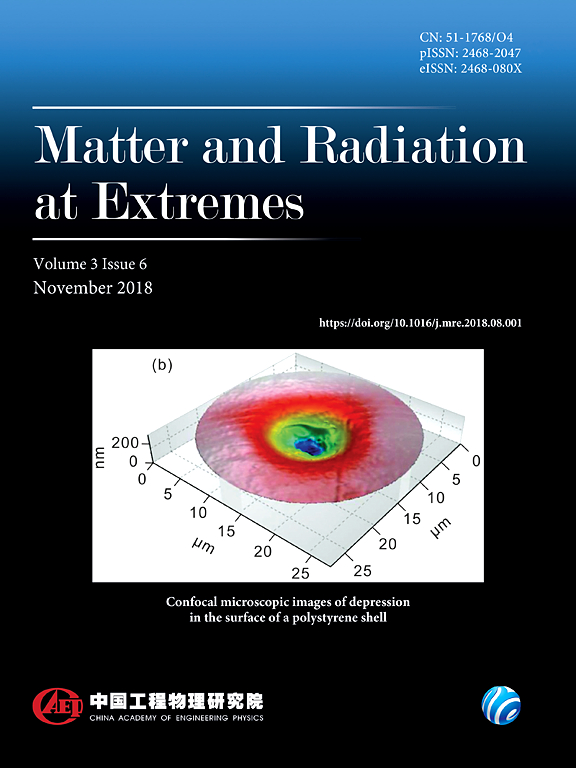利用多路超强激光优化激光耦合、物质加热和固体粒子加速
IF 4.7
1区 物理与天体物理
Q1 PHYSICS, MULTIDISCIPLINARY
引用次数: 0
摘要
由于技术限制,要充分发挥超高强度激光在粒子和辐射生成方面的潜力,需要多光束排列。在此,我们研究了如何优化激光与固体目标的耦合。实验表明,将两束高强度激光以镜面配置重叠照射到具有大型前等离子体的固体上,可以大大提高在目标前部产生热电子和在目标后部加速离子的能力。通过多维粒子入胞模拟分析了其基本机制,揭示了由靶前部两束激光驱动的自感应磁场容易发生重联,而重联是提高电子能量的一种可能机制。此外,热电子在靶体中传输过程中产生的阻性磁场往往会改善电子的准直性。我们的模拟还表明,通过重叠两束以上的激光束,可以进一步增强这种效应。本文章由计算机程序翻译,如有差异,请以英文原文为准。
Optimizing laser coupling, matter heating, and particle acceleration from solids using multiplexed ultraintense lasers
Realizing the full potential of ultrahigh-intensity lasers for particle and radiation generation will require multi-beam arrangements due to technology limitations. Here, we investigate how to optimize their coupling with solid targets. Experimentally, we show that overlapping two intense lasers in a mirror-like configuration onto a solid with a large preplasma can greatly improve the generation of hot electrons at the target front and ion acceleration at the target backside. The underlying mechanisms are analyzed through multidimensional particle-in-cell simulations, revealing that the self-induced magnetic fields driven by the two laser beams at the target front are susceptible to reconnection, which is one possible mechanism to boost electron energization. In addition, the resistive magnetic field generated during the transport of the hot electrons in the target bulk tends to improve their collimation. Our simulations also indicate that such effects can be further enhanced by overlapping more than two laser beams.
求助全文
通过发布文献求助,成功后即可免费获取论文全文。
去求助
来源期刊

Matter and Radiation at Extremes
Physics and Astronomy-Atomic and Molecular Physics, and Optics
CiteScore
8.60
自引率
9.80%
发文量
160
审稿时长
15 weeks
期刊介绍:
Matter and Radiation at Extremes (MRE), is committed to the publication of original and impactful research and review papers that address extreme states of matter and radiation, and the associated science and technology that are employed to produce and diagnose these conditions in the laboratory. Drivers, targets and diagnostics are included along with related numerical simulation and computational methods. It aims to provide a peer-reviewed platform for the international physics community and promote worldwide dissemination of the latest and impactful research in related fields.
 求助内容:
求助内容: 应助结果提醒方式:
应助结果提醒方式:


